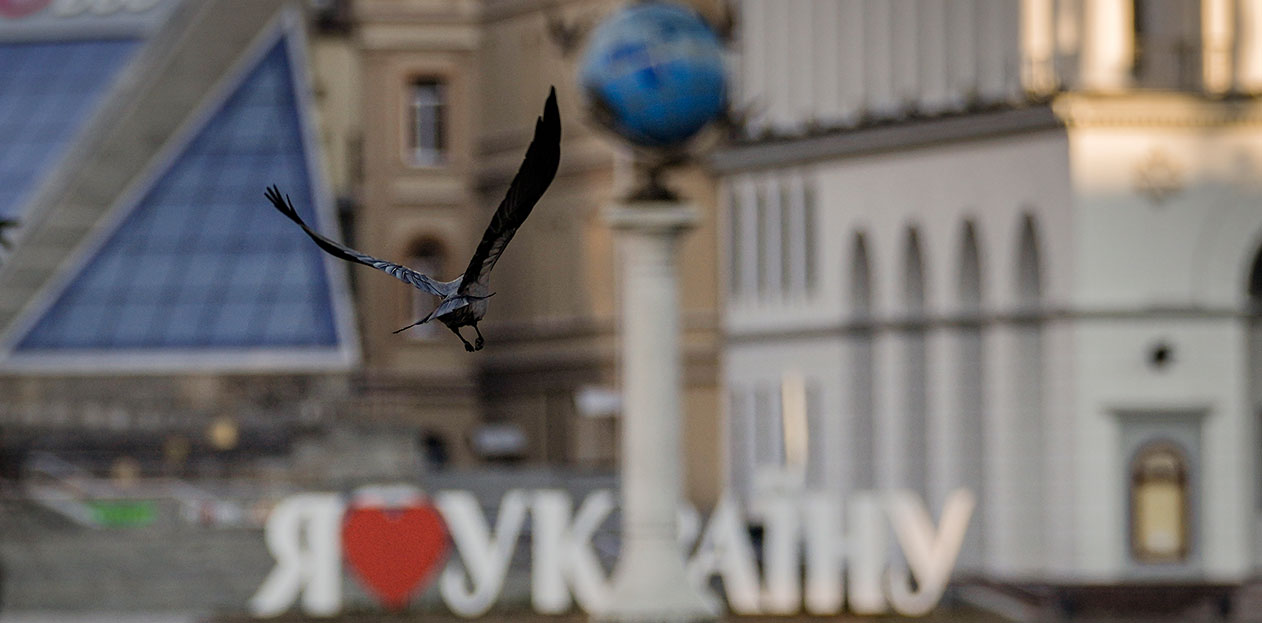
Maxim, like the majority of those I had encountered in Kiev, let his contempt for President Viktor Yanukovych be known. I met him after waiting for what seemed an eternity outside of the city’s European Council building, where I had just attended a press conference on the ongoing Euromaidan movement. Shivering and in urgent need of warmth to escape the sub-zero temperatures, I scurried into his cab.
I was surprised to find out that Maxim had just moved back to Ukraine a few years before after spending almost two decades in Chicago. As we began to traverse the jaw-droppingly beautiful streets of Kiev, he could barely contain his excitement for the protest movement that had swept the city over the past several weeks. In a semi-Chicagoan accent, he then talked of the struggle and strife his family faced.
“You know, my mother is given almost nothing every month after working for her entire life. There’s no money to live a decent life. I get harassed almost every night by corrupt policemen who tell me that I need to pay them if I want to keep driving my car at night. It’s just intimidation, though. I’m not afraid of them. They’re desperate for money, too.”
Maxim was no aberration. The majority of those I had met over the previous days had also been drawn to Maidan as a consequence of economic factors. Their rage was pure, and more than justified. However, I questioned whether the politics of this movement – a desire to join the imperialist and neoliberal European Union – could ever rectify the central problems they had. If anything, I wondered if this kind of integration might deepen their woes, as was obvious in a country like Greece that was now starting to rise up against EU imposed austerity.
Nonetheless, these common struggling people were clearly who made up the bulk of Maidan. Yet there was something far more sinister and troubling that I had witnessed from the moment I set foot in the central encampment a few nights before.
Into the heart of Euromaidan
“Welcome to our revolution!” was how I had been greeted by the first taxi driver I encountered in Kiev when I had arrived at Boryspil Airport fairly late in the evening.
There was a heavy smell of smoke as we reached the area about half a mile to Maidan – the central square that had become synonymous with the name of the movement that was seeking the ouster of President Viktor Yanukovych and his Party of Regions. I had seen the fires lit by activists on TV for weeks, images that gave the protests an exceptionally hardcore look.
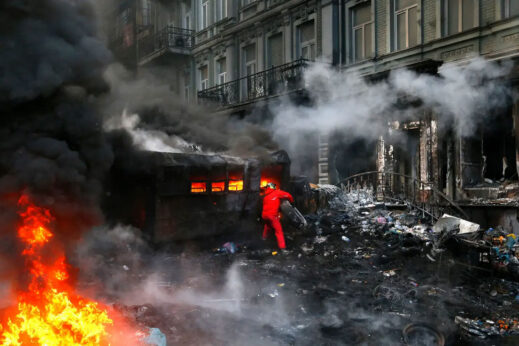
We eventually found a route to take that would bring us to what looked like an entrance to the square, which was no easy task since so many of the roads had been blocked by barricades. Men wearing helmets and carrying long sticks patrolled the entrance, taking their responsibility as security guards very seriously. The driver was kind enough to exchange a few words with one of these guards, letting him know that I would need to pass through on foot in order to make it to my hotel, which was apparently inside of the barricades.
It was well after midnight by this time. The first thing I was able to discern were dozens of red and black flags flying near the entrance as a handful of middle-aged men warmed their hands over fires. Had I been in Latin America, the sight of the red and black would have made me feel right at home. In that part of the world, they are synonymous with left-wing movements like Cuba’s 26th of July Movement, or Nicaragua’s Sandinistas. However, the progressive, socialist orientation of the countries formerly under the jackboot of Spanish and then U.S. colonial and imperial domination had nothing in common with the reactionary nationalism on display here.
In Ukraine, these flags represented far-right, neo-Nazi elements. The banner has its origins in the Ukrainian Insurgent Army, a group that collaborated with Nazi Germany during the Second World War under the leadership of Stepan Bandera (many who fly the flag today are often called Banderists, as a result). This particular variant of the flag belonged to a modern fascist phenomenon called Pravy Sektor, or Right Sector.
The guy was wearing that awful symbol
I soon noticed the guy who had let me into the Maidan camp and was guiding me to the hotel was also wearing the same red and black banner around his right arm. “Holy shit,” I thought. “I’m being walked to my hotel by a neo-Nazi!” He was, indeed, a polite fascist. In broken English, he extended his right hand and said “I am Vladimir. Your name is?” This caught me off guard, but considering I was on my own and had absolutely no idea where I was going, I knew I had to play along. I greeted him back and became fascinated by what he was doing here, why his organization thought it important to play a role, and how their politics align with the pro-European Union sentiment that was seemingly the basis of the protest movement. It was obvious that the language barrier was too great, though. After a few minutes of walking, Vladimir gestured towards the entrance of the hotel. I thanked him for his kindness, and he left me with “good luck, my friend.”
The first place I visited once the sun had risen on my first full day in Kiev was not the center of Maidan itself, but the “frontlines.” This surprised me immediately, as I hadn’t known that so many streets had been occupied by protesters. It did explain why my taxi driver had so much trouble getting close to the hotel the night before, though. The frontline was a set of barricades that had been erected by demonstrators on Grosovskogo Street that led to the Rada (Parliament).
As I approached, I could see maybe 30 members of the now infamous Berkut police service stand guard on the opposite side. On my side, activists (or militants?) continued to pile sandbags on top of each other. These were some of the most impressive barricades I had ever seen. My thoughts were that there was no way in hell that the camp would ever be in any danger with these kinds of — they looked practically unassailable — roadblocks in place. It was quiet at the moment, as it was only a little after 9:00 in the morning. I was told that if I was to come here later in the day I should “always wear a helmet and vest” since “this is where the fighting happens.”
Heading back in the direction of the hotel, I asked my colleague if he had any idea of who “the fighters” were. He explained that from what he was able to determine, the camp and frontlines were not just playing different functions., “The movement is completely split,” he told me. “The more liberal ones stay in Maidan, but the far-right comes here to face off with the cops.”
Unfortunately, to reach these more “liberal” protesters, I had to first pass through a part of the camp which Svoboda claimed as its territory. More than 15 flags of the party plastered with its three-finger salute in yellow on a blue background were flying overhead. I thought of how in the supposedly undemocratic Soviet Union, these fascist organizations had been ruthlessly suppressed. But in today’s democratic Ukraine, they were free to spew whatever messages they say fit. Was this what ‘freedom’ was all about? If so, who has become unfree as a consequence?
The political coalition that dominated Maidan consisted of two other parties in addition to Svoboda—former boxer Vitali Klitschko’s UDAR and the Fatherland Front headed by Arseniy Yatsenyuk. Both of these parties were not only larger but more influential in Ukrainian political life. Although Klitschko (now receiving renewed fame as the defiant mayor of Kiev) and Yatsenyuk are not fascists, the question begs itself: had they not been acting – by a quite literal definition — as fascist collaborators? Why rub shoulders with Svoboda’s leader Oleh Tyahnybok?
Due to the debilitating cold that we normally spent up to 12 hours a day working in, it was common for those I was working alongside to often take short breaks inside our hotel lobby. We would spend maybe an hour filming, then maybe 20 minutes inside, with the occasional vodka shot a part of the warming process. On my third night, I needed to rush through the break though, because Tyahnybok was about to speak.
This was the man who had not only been rubbing shoulders with Klitchsko and Yatsenyuk but also with the infamous U.S. war hawk John McCain. As he belted out his speech to what was on this night a relatively sparse audience (it was a weekday after all, and the weekends saw much larger crowds), it all became crystallized in my mind how for U.S. imperialism, no political figure is too unpalatable or beyond the pale to utilize.
Within days, I had left Kiev. Events would spiral out of control within the next two weeks, with street battles raging where I had just recently stood near those “unassailable” looking sandbags. Berkut officers had gunned down scores, and Viktor Yanukovych fled for Russia.
A journey inside the anti-Maidan
The next month, I would find myself back in Ukraine. By this time, Spring was threatening to make its presence felt. I stood in the middle of a massive square in a city of nearly a million. As was commonplace, a protest was getting ready to get underway.
As the rally began and slowly built up an ever-growing audience, speaker after speaker raised their voices around a platform of narrow nationalism, at times even shouting the names of prominent neo-fascist figures. I had a sense of déjà vu.
On this occasion, I was hundreds of miles from Kiev in the eastern city of Donetsk, a largely Russian-speaking city not far from the border. Here is where I was told I would find the supposedly anti-fascist organizers who were seeking to delink from the new “neo-Nazi” government in Kiev.
I found this rather difficult to believe as the protest wore on, given the content of the demonstration that I was witnessing. Pavel Gubarev was on the lips of many of the demonstrators, his name being chanted throughout. This alleged “former” neo-Nazi of the Russian National Unity Party (RNU) had declared himself governor of the region the previous week and was now in a Ukrainian prison.
It was roughly an hour in, and I was keen to speak to the few people who held either Soviet flags or the Victory banner from 1945 that is emblazoned with the hammer and sickle. Assuming that these were communists or leftists of some stripe, I was soon disappointed, because as I was told by one rather stern looking older man carrying a flag with Joseph Stalin’s portrait, “I’m a Russian nationalist and patriot! This flag to me represents when our country was great. Stalin didn’t care about those damn Ukrainians!”
In the weeks and months to come, the Donetsk and Lugansk separatist entities went to great lengths to try positioning themselves as homegrown entities, often replacing reactionary figures who were proven to be Russian intelligence assets – such as Igor Girkin – with more palatable local personalities. For its part, Moscow tried to present itself as being detached from the so-called “People’s Republics.” They would express sympathy for the Russian speakers in those regions, who were considered under threat from the new regime, but they tried to mask organic links.
Gubarev’s old Russian National Unity would go on to send thousands of volunteers to fight in the “anti-fascist” units on Donbass once the situation escalated into full-fledged war the next month. The group was sure to conceal their Nazi insignia while doing so, given the necessity of referring to the fascists as only being on the other side of the battlefield.
Some of the most revanchist Russian neo-imperial figures and organizations would also send their forces to fight in Donbass, such as The Other Russia (formerly the National Bolshevik Party), an organization that attempted to bizarrely fuse Nazi ideals with some Soviet ones.
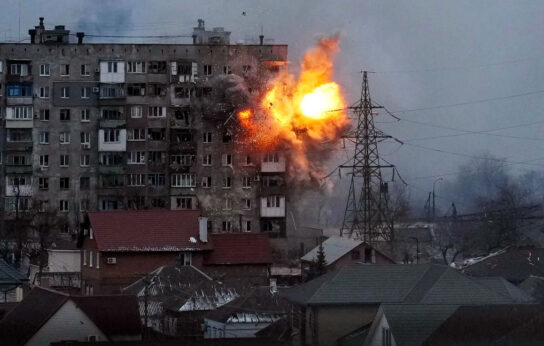
Many other chauvinist militias would sprout up that denied that Ukraine was a nation, such as the Russian Orthodox Army. This all seemed a logical conclusion of the training given from the mid-2000s by fascist philosopher Aleksandr Dugin’s Eurasian Youth Union to activists from the Donetsk Republic group – the forerunner in symbolism and organization – of the Donetsk People’s Republic entity.
I feel somewhat disappointed with myself looking back on the events I witnessed in 2014 and how I responded to them. I was quite eager to share with the world the reality of what I saw in Kiev, which I don’t regret. But I was far more measured and reserved about pointing out that I saw similar far-right forces in Donetsk.
This was a personal – and a political – decision. When the western press was quick to try dismissing the indispensable role played by those far-right and neo-Nazi groups in the overthrow of Yanukovych, I was keen to point them out. These – after all – were important points that needed to be made.
It was clear to me that the United States and NATO were salivating at the prospect of moving Ukraine out of the Russian strategic space and into the western frontier. To accomplish this end, they were eager to utilize the vilest forces necessary, no different than they were willing to do so in the 1980s in Afghanistan by turning to the Mujahideen. Eerily and disgustingly, former U.S. Secretary of State Hillary Clinton invoked exactly this very historical example recently in discussing how Ukraine could overcome Russian aggression. One can only imagine what kind of far-right forces might emerge over the course of a protracted insurgency.
I bit my tongue about what I had seen
However, at the time, I largely bit my tongue when it came to what I had seen in the Donbass. I didn’t want to give ammunition to western imperialism. That was part of it. The other is that I was on this point quite naïve politically. I assumed that – to at least some extent – the enemy of my enemy is my friend. I didn’t want to admit that actually that kind of childish, infantile logic doesn’t hold water. In fact, the enemy of my enemy could be an arch-reactionary. It was also quite conceivable that many of the avowed “anti-fascists” were in reality – well, fascists themselves.
The fact that Lenin monuments continued to stand in eastern Ukraine was of course an important difference from the rest of the country, where mobs had been toppling them throughout the winter. But even this was often far more complex than it appeared on the surface. As one Russian nationalist told me regarding Lenin, “he is part of our Russian heritage, even if his mistakes in supporting Ukraine were fatal. I admire Lenin, but I am definitely no Leninist.”
Watching Putin’s neo-Tsarist speech years later in which he attacked Lenin for fighting Great Russian chauvinism was illuminating in this regard. I had long since learned that respect or even love for Soviet symbolism did not necessarily mean support for the socialist ideas related to the union and brotherhood of nations that were conceived of by the Bolsheviks in 1917. Sometimes this just spoke to the worst of Great Russian chauvinism in a bizarre fashion. People were clamoring for the time when they perceived Russia to truly be great, and for many, that meant the Soviet Union. But when it came to the ideology, they diverged.
At the same time, it’s also clear that many communists and self-professed leftists have also been among those fighting within the ranks of the Donetsk and Lugansk People’s Republics militias. That is beyond dispute, and often these forces are pointed to by those on the left abroad who tend to have a rather rosy perspective on those regions as leading a progressive fightback against Kiev’s reactionary, pro-western government.
Given the Ukrainian state’s orientation toward full “decommunization” after the 2014 toppling of Yanukovych that aims to eliminate any sort of even remotely positive historiography toward the Soviet era, it is not insignificant that in the so-called People’s Republics, there is space to still be a communist. Therefore, it’s not lost on me that the banned Communist Party of Ukraine continues to operate in those regions with essentially the same program as the now underground party in the rest of the country.
Other leftist forces have also had to flee to either the Donbass or Crimea in order to operate with any degree of safety. These include Borotba, a split from the Communist Party, whose members have faced an incredible degree of threats to their lives.
It’s obvious even through the hell of this current war that the space is becoming ever more restricted for the left to operate. President Volodymyr Zelensky’s decision to ban seven “pro-Russian” parties happens to include many self-professed leftist parties, begging the question of whether this is really about countering Russia’s criminal war or extending the “decommunization” process to include the broader left.
At the same time, I think it would be flawed to not point out that much of the discourse in the so-called People’s Republics is driven by the same kind of narrow nationalism and chauvinism that guides arch-reactionaries and neo-Nazis on the Ukrainian government’s side. I couldn’t help but feel as if much of what I witnessed in Donetsk was the mirror image to what I had seen in Kiev.
The need for unity and socialism
Looking back at the events of 2014 I witnessed in Kiev and Donetsk, it’s now fairly for me easy to see that the broad masses were just being played for fools in a geostrategic chess match between those criminals – the capitalists – who looked to the east, on the one hand, and those who looked to the west, on the other. This reality seems to have currently come to its logical, hellish conclusion now that Russia has taken the step of invading Ukraine.
Perhaps more than anything, this underscores the necessity of socialism – for the unity of nations as equals and for the overcoming of all variants of reactionary nationalism. It would also mean getting rid of those ugly oligarchs who looted the people’s wealth after 1991.
In that sense, I recall the words of Maxim, my sort-of Chicagoan taxi driver from Kiev.
“I remember when the USSR vanished. I visited New York almost right after. I couldn’t really understand why people there would always take really short showers like they were counting how long they were in there for or how much water they used. In my youth, I remember playing outside and then coming in and taking long baths, sometimes just letting the water run carelessly. Now though, I tell my kids to keep their bath time really short, because I honestly don’t have the money to pay the water bill most months. People who absolutely hated life in Soviet times are starting to think that maybe we didn’t have it so bad after all. I mean, we always had enough to eat, we didn’t have to worry about our bills, our education, or visiting the doctor.”
This was the same man who in his previous sentences had expressed such enthusiasm for the possibility of accession to the European Union. In the years to come, the governments of Petro Poroshenko and Zelensky would deepen the privatization of key industries while ruthlessly suppressing the workers’ movement.
I wonder what reflections Maxim might have had on the years since 2014. More importantly, I wonder what his life looks like now. Had he long made the decision to once against leave Ukraine? Is he still holding on to his beloved Kiev? Has he taken the decision to take up arms, or has he been forced to do so? Undoubtedly, whatever the case, these are sure to be trying times for Maxim, just like for Ukraine as a whole.



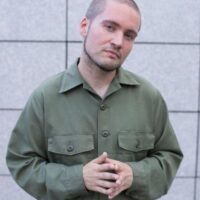
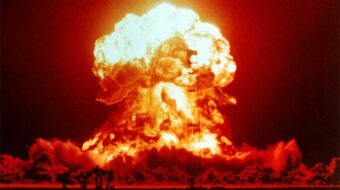
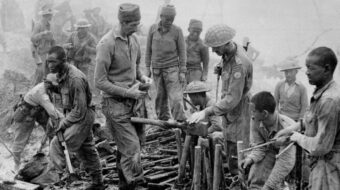
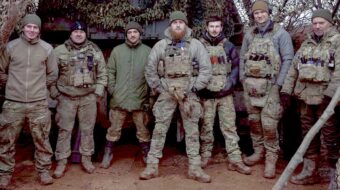





Comments